Review: GoPro Professional Guide to Filmmaking
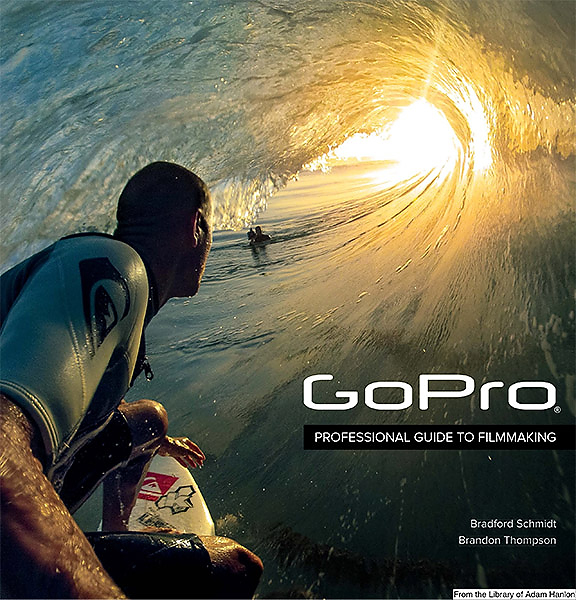
GoPro HERO cameras have changed the way that people capture moving pictures. The price point, simplicity and quality of footage that these devices can output has “democratized” video capture and put filmmaking into the hands of people who simply would not have been interested or able to create films prior to their arrival. This has certainly been the case with underwater video, as Gopros almost seem to be a standard item of divers’ equipment and scenes captured underwater now occupy vast swathes of bandwidth on YouTube and the like.
However, on closer inspection, it is an unfortunate reality that many of these films, whilst beautiful in the eye of the creator, are perhaps not quite as well shot and/or edited as they could be. I, in common with many other people, am guilty of turning the GoPro on and “letting it run” while I am underwater. This results in a lot of unusable or poor footage. I am also guilty of not always being as selective as I should in terms of camera settings or in refining my edits as smoothly as possible.
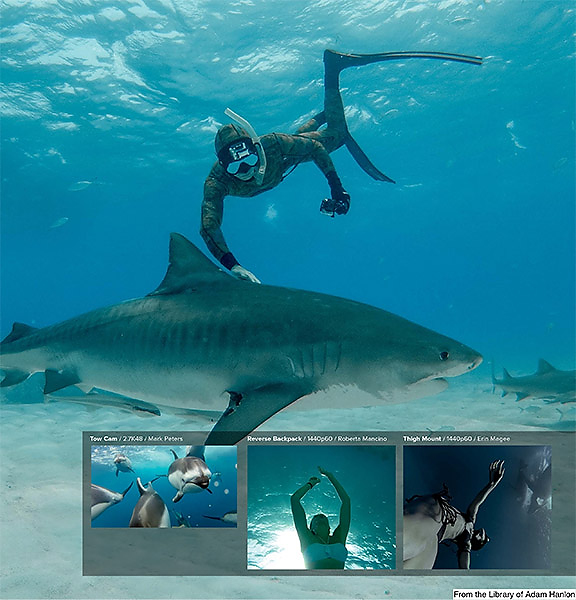
Enter the recently published GoPro: Professional Guide to Filmmaking by Bradford Schmidt and Brandon Thompson. Published by Peachpit Press, Schmidt and Cole are both senior employees at Gopro’s media department and have been with the company since very early on, so they know what they are writing about!
GoPro’s inventor, Nicholas Woodman, described the GoPro as a proactive device. This means that it is something that requires thought and set up prior to the event you are trying to capture. By contrast, he feels that smartphones (as an example) are reactive devices that are typically used without planning or forethought. The authors describe the process of filming as “trapping” the footage, as opposed to the traditional method of chasing it. This of course means that while you will get acceptable results in the GoPro’s default modes, in order to truly utilize its potential, you need to understand more about the camera’s settings and how to create, edit and shape the story you are capturing.
Capture settings
The GoPro: Professional Guide to Filmmaking starts by looking at the various capture settings that are available and explains which are suitable for different types of shot. For example, the book suggests that using a 16:9 aspect ratio is great for wide “establishing” scenes but actually is less effective than 4:3 for most body-mounted point of view (POV) shots. This is why 960p, 1440p and 2.7K 4:3 video resolutions all have 4:3 aspect ratios.
The book deals with all HERO models, including the recently released HERO4 Black, so is completely up to date and also offers advice for older versions.
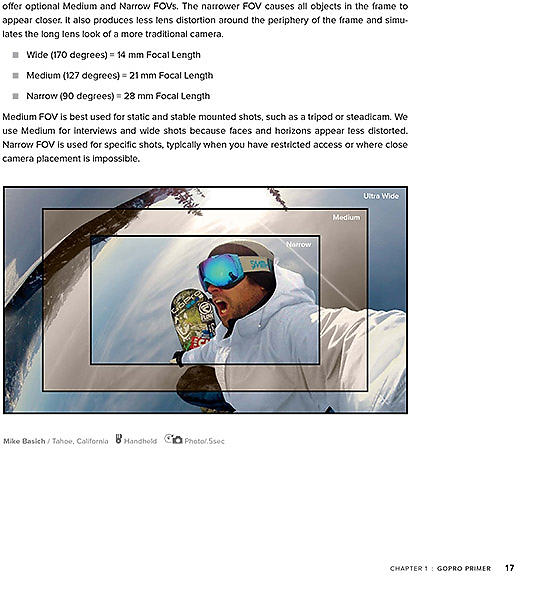
The authors do caution about becoming too obsessed about the mode that you are shooting in…..
Because content is king. At the end of the day, the actual content being captured is more important than the resolution or frame rate it is captured in. So if you’re feeling anxious about whether or not the mode you’re using is correct, don’t worry. Throughout this book we aim to help you learn without getting bogged down by the numbers. As long as you’re passionate and focused on creating great content, the technical knowledge will come naturally with experience.
In many ways, GoPros are a system camera, and their output is as much about how the cameras are mounted as it is about the cameras themselves. The book deal with the various mounting options available and underlines that unique shots are created as much by seeking novel ways of attaching cameras as they are by technical means. The book deals with the attachment techniques used in filming the Shark Riders and Whale Fantasia short films by the GoPro team, as well as examples from many other films.
For this review, I purchased the electronic version, which can be downloaded as a pdf, Mobi or ePub. In each case, the various techniques are linked from within the eBook to the actual films being discussed, making it easy to see the techniques in action. For this reason, I would suggest the electronic versions are a great option for those planning on purchasing this book.
Filmmaking
From here on the book develops the theme of filmmaking, rather than how to use the camera! This really is the most important part of the book as it gives a great primer on the filmmaking process in general, but also serves to remind us that the traditional approach of sticking whatever comes out of the camera onto YouTube or Facebook seriously limits that appeal and watchability of the films that we produce. The key here is the concept of a trying to film and hence show a story to the viewer that captivates and engages them, rather than simply documenting what has been seen.
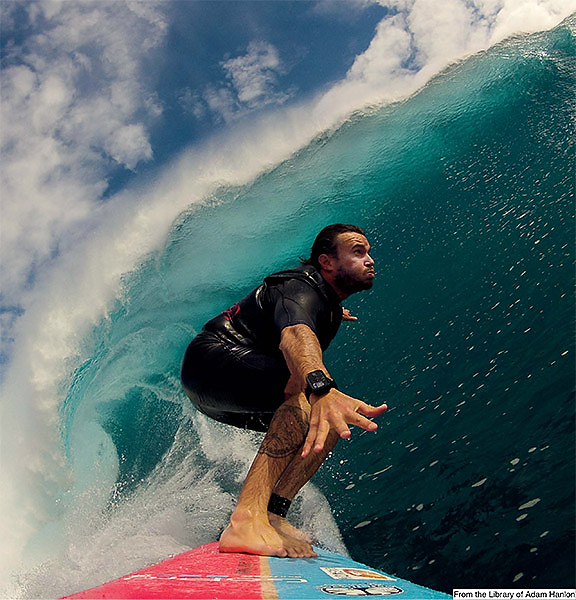
Chapter 5 goes into the “nuts and bolts” of capturing a story, including preparation, on-site production, light, interviews, environmentals and time lapse, experimentation and improvisation. It finishes with several case studies, each showing a different approach and resources. These go from one man with one camera, through to one man with 30 cameras!
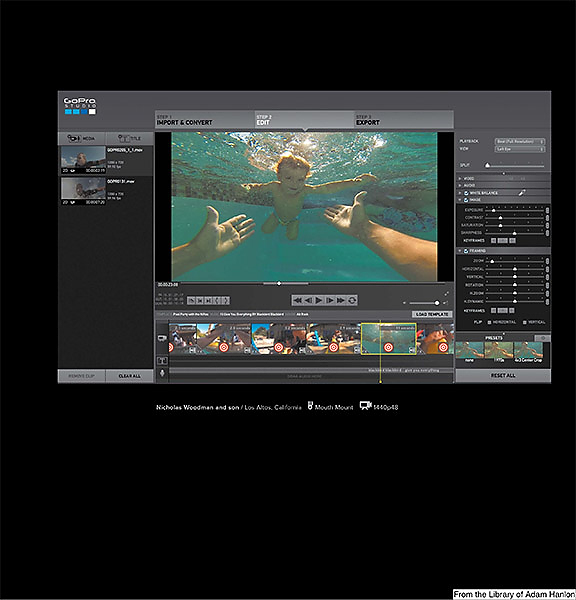
Logically, the next stage is to import the captured footage and edit it into a story. The book does not become an instruction manual for GoPro’s own Studio software, although it does, of course mention techniques that can be performed within it. Rather, it analyzes how editing can be used to enhance and shape the story that the filmmaker is trying to tell without a technical description of how to edit footage. There are plenty of other tutorials and resources available to enhance an individual’s skill with a given editing package.
The authors divide the editing up into 5 stages, each one refining the footage and shaping the story. One of these steps involves a “paper cut” which is an “on-paper” outline of the key moments in it. This is then used as a guide to determine how the editors timeline will be laid out and what will be included and what left out.
The penultimate chapter looks at the story telling devices that are available to create and hold an audience’s interest. Stories can be focused around events, individuals and imagery, but typically they need to contain a narrative. The book offers several options including “The Moment”, “Power Intro”, “The Montage”, “Character Study” and “The Race”. Each of these (and there are more) are story telling structures that contain logical stages that help to build an audience’s anticipation, enjoyment and will hold their attention. The suggestions provided by the authors are formulaic, so can be used in many different situations.
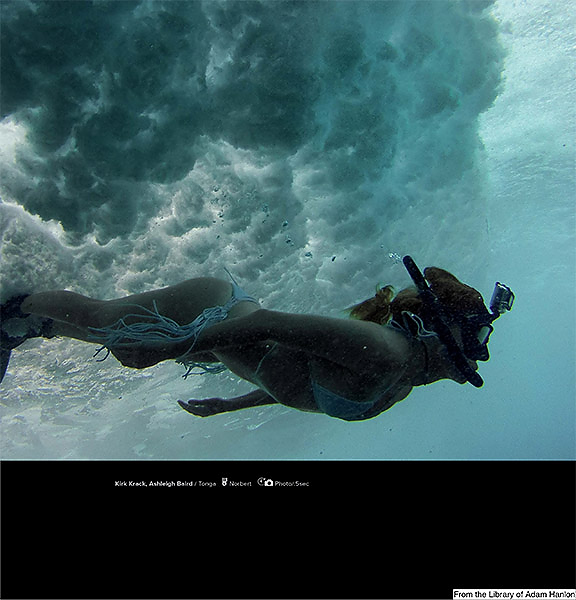
The last chapter focuses on how to get your film “out there”. Various experts from the world of social media and video sharing sites write about the best ways to get your stories being watched by people. Venues include YouTube, Instagram and Facebook, and the chapter provides advice on how to make your video go viral (simply put, get a cat involved somehow…!)
Conclusion
I found that this book contained a wealth of innovative ideas that will motivate me to try to create some special results with my camera, rather than to simply capture the scenes around me. Although not underwater specific, most of the principles that are contained in it are generic. The technical elements in the book did a great job in informing me how and why particular setting choices are (or are not) available on the camera and have already actually prompted me to try some different methods of attaching the camera.
The strength in this book though is in its value as a primer for filmmaking with GoPros. I am sure that for those that are already in the business of this, there is probably not a huge amount of groundbreaking new information. For the bulk of GoPro users though it is a fascinating and elucidating insight into the process and provides clear instructions for those that wish to create films with their cameras. If you really want to produce video that will engage your audiences and fulfill a creative urge, this book provides an essential and step by step methodology in doing so. My feeling is that it will dramatically improve your ability as a filmmaker.
I plan to take several GoPros (including a HERO4) to Tiger Beach in January on the Wetpixel Ultimate Tiger shark trip to put some of these new ideas into practice, and will be reporting back to the Wetpixel community how I got on! I think (and fervently hope) that this book will help make my efforts more entertaining for the audience.
Availability
The GoPro: Professional Guide to Filmmaking is available now as a print edition or as a download from many good online and physical book retailers, including Amazon. The review copy was purchased as a download directly from the publisher, Peachpit. As such, it is possible to download it as a pdf, Mobi and ePub, which is useful for reading and referencing it over several different devices.
FTC disclaimer
The GoPro: Professional Guide to Filmmaking was purchased by the reviewer for the purpose of this review.
All images are ©GoPro